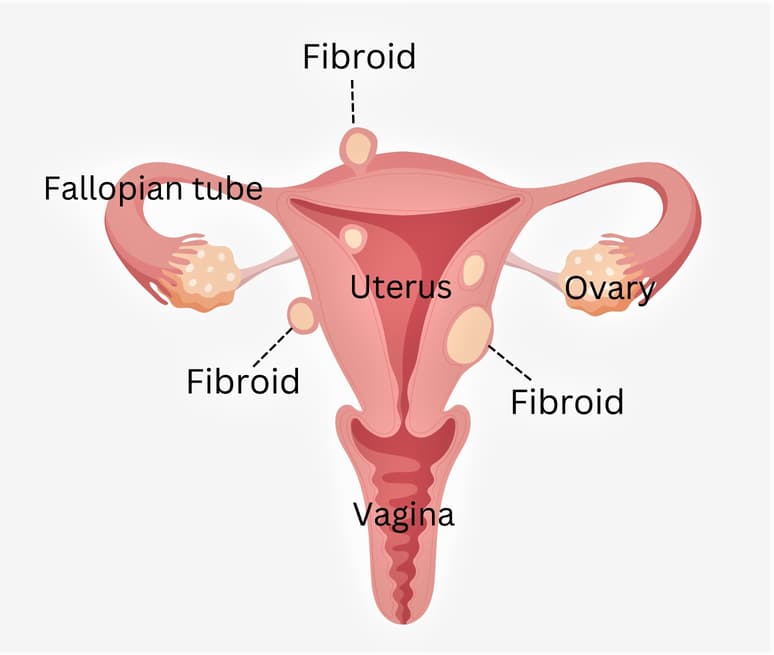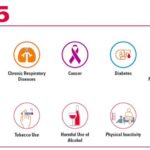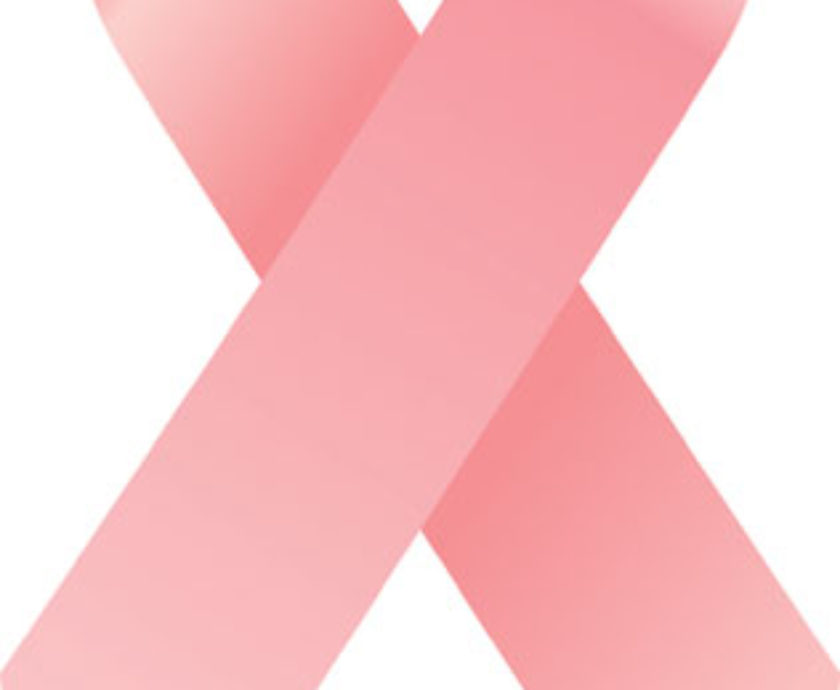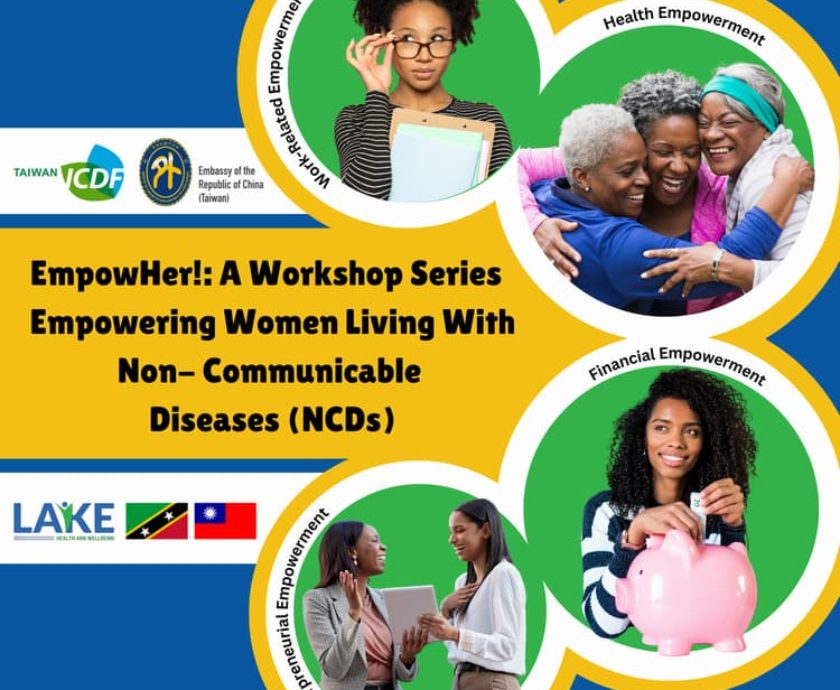We are delighted to share another article from our guest blogger, Teresa Coburn. Teresa is a registered nurse with 30 years of clinical experience. She is now using her expertise, knowledge and skills to create engaging and socially responsible health content.
Many women anticipate some discomfort during their monthly period. It’s not unusual to encounter tummy pain, back pain, and slightly heavier bleeding during the initial days of menstruation. However, if your symptoms are more intense than expected, along with a sensation of pressure, it’s essential to consider the possibility of fibroids.
What Are Fibroids?
Fibroids are an extremely common condition where non-cancerous growths develop in the walls of the uterus. Occasionally they can be found growing outside of the uterus in the fallopian tubes or cervix.
Fibroids are usually round and made up of smooth muscle cells and fibrous connective tissue. The size of each fibroid can vary: some can be small like a grain of rice, and others can grow as big as a melon.
Fibroids can develop in any woman or girl of childbearing age. Although they are frequently diagnosed in women in their 30s and 40s, it’s worth noting that fibroids can also occur in teenagers as well as older women.

Signs and Symptoms
It is estimated that approximately 70 per cent of women will develop fibroids in their lifetime — however, not everyone will develop symptoms or require treatment.
While most women with fibroids do not experience any symptoms, some people have issues that can interfere with their daily activities.
The most common symptoms of fibroids include:
- Painful, heavy or prolonged periods.
- Anaemia (this can cause tiredness, dizziness, and headaches).
- Abdominal (tummy) pain.
- Lower back pain and leg pain.
- Bloating.
- Constipation.
- Frequent urination.
- Pain, discomfort or bleeding during sex.
- Pelvic pain or pressure.
Causes and Risk Factors
The cause of fibroids isn’t known, but there are a few factors that increase your risk, such as hormones and genetics. Other risk factors include lifestyle choices and diet.
Hormones
- Experts know fibroids respond to hormones.
- They grow rapidly in pregnancy when oestrogen and progesterone are high, and often shrink in size after menopause due to the natural reduction in oestrogen.
- For women who already have fibroids, the birth control pill may encourage the fibroids to grow larger.
Genetics
- Research shows that Afro-Caribbean (i.e. Black) women are more likely to have fibroids, but fibroids can affect women of all ethnic backgrounds.
- Genetic mutations to the cells in the uterus can play a role in the development of fibroids.
- You are more likely to get fibroids if your mother or sister has them.
Lifestyle choices and diet
- Eating a lot of red meat is linked to a higher risk of fibroids, but eating lots of green vegetables seems to protect women from developing fibroids.
- Women who are overweight have a greater risk of developing fibroids.
- Taking excessive alcohol, caffeine and sugar may increase your risk of developing fibroids, and if you already have fibroids, it can make the symptoms worse.
- It is thought that a vitamin D deficiency may be linked to fibroid growth.
- Sitting all day or leading a sedentary lifestyle may increase the risk of developing fibroids.
Diagnosis
Often fibroids do not cause symptoms and they are often found by chance during a routine checkup or when the doctor is performing an exam for another issue.
To confirm that fibroids are present and see what size they are, the doctor may perform a few tests.
- A physical pelvic exam and discuss your medical and family history.
- Imaging tests, such as ultrasound or MRI.
- Sometimes other procedures may be requested like a hysteroscopy (looking inside your uterus with a small telescope via the vagina and cervix) or a laparoscopy (looking at your uterus with a small camera through the abdomen).
Blood tests may also be performed to rule out other issues like thyroid problems, or to check if you have anaemia (low iron).
Treatments
There are a few ways that doctors can manage fibroids and their symptoms.
Watchful Waiting
If your fibroids are not causing problems, they won’t need any treatment. In these cases, often the Watch and Wait approach is used.This involves visiting your doctor at regular intervals for monitoring and observation. Each visit may include a physical pelvic exam to check if the fibroids have changed in size, a discussion about any symptoms you may have, and the chance to ask any questions or discuss any issues that are bothering you.
Medications
Medications do not provide a cure for fibroids but they can help manage symptoms.
- Nonsteroidal anti-inflammatory medications such as ibuprofen or paracetamol can help ease pain.
- Iron supplements and vitamins can help with energy if you’re bleeding heavily and have anaemia (low iron) as a result.
- A special device called a progestin-releasing intrauterine device (IUD or Coil) can be placed inside your uterus to help manage heavy bleeding during your periods. It also prevents pregnancy.
- Hormones, either as tablets, nasal sprays or injections, can help in a few ways. They use hormones that regulate your menstrual cycle, so they can help with symptoms such as heavy periods and pelvic pressure. They can also be used to reduce the size of the fibroids.
Minimally invasive procedures
These are surgical procedures that are performed through tiny incisions in the skin (keyhole surgery), or through the vagina and cervix instead of major open surgery. This means less post-procedure pain and a shorter recovery time.
- Endometrial ablation. Removes the lining of the uterus by using heat waves, microwave energy, hot water, or electric current. This helps reduce heavy bleeding.
- Radiofrequency ablation. Small needles are inserted into the fibroid (through small incisions or via the cervix) that heat the fibroid tissue and destroy it.
- Uterine artery embolization. Involves blocking the blood vessels that flow to the fibroid. This causes the fibroid to shrink, and therefore reducing symptoms.
- MRI-guided procedures. These procedures use an MRI machine to guide ultrasound or laser energy to target and destroy the fibroid.
- Hysteroscopic myomectomy. Removes fibroids located inside the uterus using a small telescope and instruments inserted through the vagina and cervix.
- Laparoscopic or robotic myomectomy removes fibroids through small incisions in the abdomen while leaving the uterus in place.
Surgical interventions
If your fibroids continue to cause uncomfortable symptoms and are poorly controlled despite medication or other forms of treatment, surgery to remove them may be helpful.
- Abdominal myomectomy is an open surgery through the abdomen to remove fibroids in the uterus. It can be performed when the fibroids are large or very deep.
- Hysterectomy is the complete removal of the uterus through abdominal surgery or the vaginal opening. This is usually only for women who have completed their family or do not wish to have children.
Living and coping with fibroids
While fibroids can’t be completely prevented, research suggests that certain lifestyle habits may influence their growth, symptoms, and possibly their development.
So, whether you decide to opt for treatments or manage your fibroids conservatively, making some changes in your daily activities may be helpful.
Diet and nutrition
Maintaining a balanced and nutritious diet is essential for supporting overall health and can help reduce the symptoms of fibroids.
To help with managing fibroids, focus on:
- A diet rich in green and cruciferous vegetables (broccoli, cabbage, cauliflower), fruits, whole grains and low-fat dairy.
- Limiting your intake of red meat, alcohol, sugar and caffeine, as these foods can worsen hormone imbalance and inflammation.
- Increasing vitamin D intake.
- Foods to boost iron levels.
Exercise
The benefits of regular exercise are well known for general health and managing various chronic health issues by reducing pain, inflammation and improving blood circulation. Exercise also releases hormones, including endorphins that help to alleviate pain and cramps, improve energy and reduce stress. Research shows that women who exercise more than 7 hours a week are less likely to develop fibroids, and reduce symptoms in women who already have them.
Exercise doesn’t have to be vigorous; you can try:
- Walking.
- Swimming.
- Cycling.
- Dancing.
Stress management
High levels of stress can worsen fibroid symptoms. Practising stress-reduction techniques can help promote relaxation and lower stress hormone levels, contributing to better overall well-being and reduced discomfort. Often, just finding a few minutes in your busy day to relax is enough. Some excellent ways to de-stress include:
- Mindfulness meditation.
- Deep breathing exercises.
- Yoga or Pilates.
- Having a warm bath.
- Reading a book.
- Going for a walk.
Emotional Support and Wellbeing
Coping with fibroids can be emotionally challenging. Seeking support from those around you can help.
- Share your feelings with loved ones and discuss your symptoms.
- Join a support group, either online or in person. Connecting with others who have fibroids helps many women.
- Professional counselling or therapy can help you organise your thoughts and give you strategies to cope.
Sexual and Reproductive Health
- Sexual Intercourse. Heavy and irregular menstrual bleeding, as well as pelvic pain, can affect your sex life. It may be uncomfortable, but discussing your condition and relationship concerns openly and honestly can be beneficial. Talk to your partner about your symptoms and find ways to cope with them together.
- Birth Control. Some birth control types can make uterine fibroids grow larger, but low-dose options are less likely to cause this growth. Most low-dose birth control methods don’t have enough estrogen to stimulate fibroid growth.
- Pregnancy. Most women with fibroids experience regular pregnancies. But having fibroids can increase the likelihood of complications during pregnancy and delivery, such as needing a caesarean section or having a breech presentation. Talk to your obstetrician if you have fibroids and become pregnant. All obstetricians have experience managing fibroids and pregnancy.
- Other conditions It’s important to note that other conditions may have similar symptoms to fibroids. These include Endometriosis, Polycystic Ovary Syndrome or Adenomyosis, so it is important to be properly diagnosed by your doctor.
Overall Wellbeing
Taking care of your overall health is crucial when dealing with fibroids.
- Good quality, restful sleep aids in hormone regulation and supports the body’s healing processes.
- Smoking can increase pain as it reduces oxygen to the uterus and other pelvic organs so try to avoid it if possible.
- Heating pads or warm compresses can help to relax muscle tension and cramping.
- Some alternative therapies may offer relief from fibroid-related discomfort. Acupuncture, and acupressure, for example, are believed to stimulate blood flow and alleviate pain. (Before trying any alternative therapy, consult with a qualified healthcare professional to ensure its safety and effectiveness).
- Herbal teas, like chamomile or ginger, may help reduce inflammation and muscle cramps.
- Educate yourself about fibroids by reading reliable information and talking with your doctor.
Conclusion
Fibroids are non-life threatening but can greatly impact a woman’s quality of life, causing physical and emotional challenges. Embracing a holistic approach to health and wellbeing is vital for managing symptoms and enhancing coping strategies.
Remember the importance of regular check-ups and if you experience any unusual symptoms or have any concerns, please contact your doctor.












